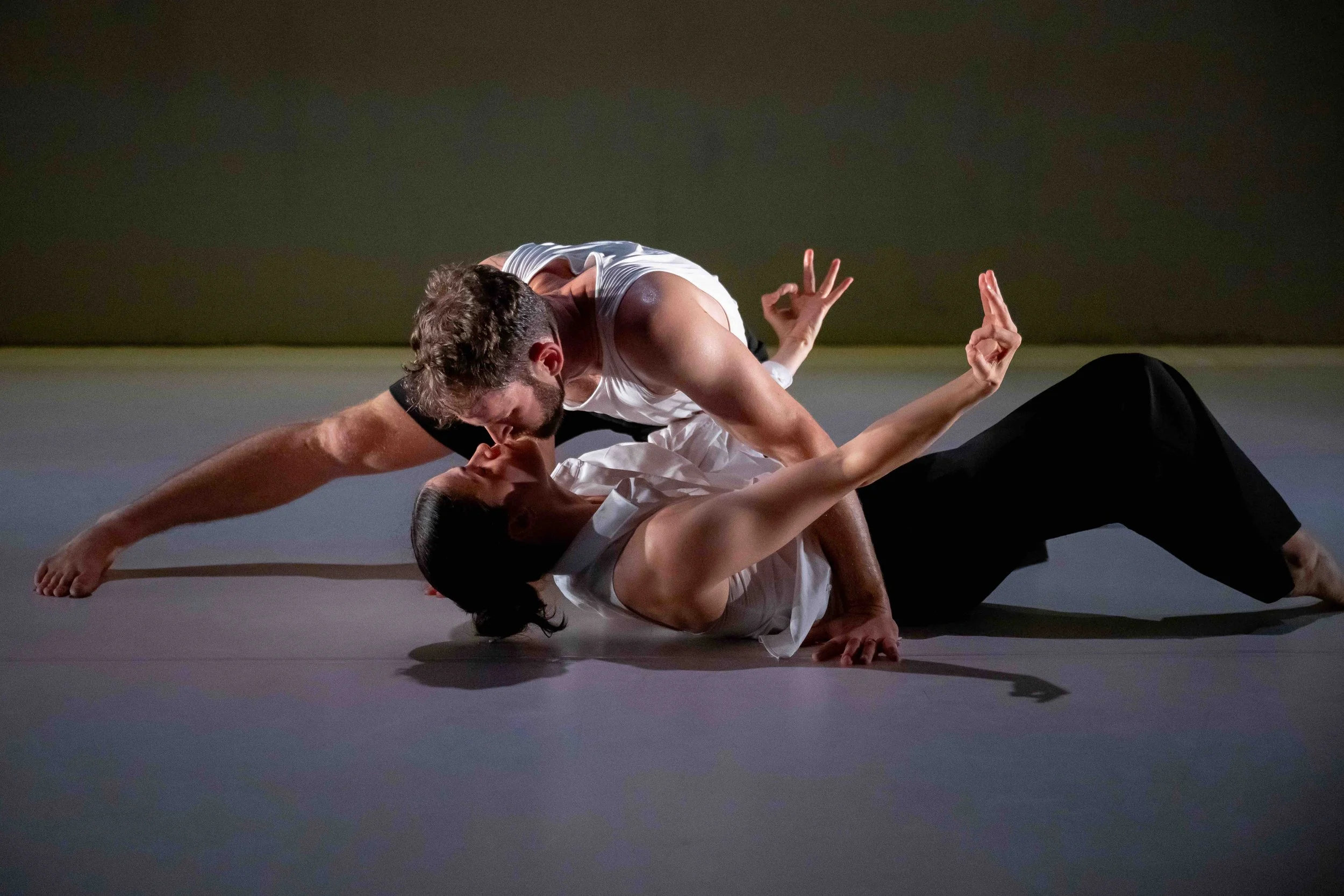Kokoro Dance founders draw on long memories of Wreck Beach for annual butoh performances in sand and water
Veteran Vancouver dance artists Barbara Bourget and Jay Hirabayashi have been making the trek down the #4 Trail for decades
Wreck Beach Butoh. Photo by Austin Cooke
Kokoro Dance presents Wreck Beach Butoh on July 15 at 10:15 am and July 16 at 10:45 am at Wreck Beach as part of the Dancing on the Edge Festival
WHEN JAY HIRABAYASHI started his master’s degree in Buddhist studies at UBC in 1973, he figured it would take around the typical two years to complete it. Something got in the way of that timeline, however: that gorgeous stretch of sand and ocean down a steep embankment below the Museum of Anthropology that is Wreck Beach.
“During the time I spent on campus, I spent increasing long breaks to lie naked on the beach, a contributing factor to why it took me five years to complete my degree,” Hirabayashi tells Stir.
He fell in love with the place, and so did his partner in life and in Kokoro Dance, Barbara Bourget. The spectacular setting has become not only a place of peace and delight for the pair but also the most stunning setting for their annual dance performance, Wreck Beach Butoh.
Working with a group of dancers—some professionals, others entirely new to the form—the two schedule performances depending on the tides, the water ever so gradually rolling in little closer to the shoreline as they go, in all types of weather, from blazing heat from horizontal rain. A quintessential Vancouver experience, there’s nothing like it in the local performing arts scene.
“For the past 28 years, we have annually trekked down the 400-some steps of the #4 Trail to strip off our clothes and immerse ourselves in Mother Nature's arms to rejuvenate our bodies and our spirits,” Hirabayashi tells Stir. “The rest of the year, we spend time trying to replicate the freedom we feel on the beach with lights, costumes, sets, and props, but there is no real substitute for the sky, water, sand, wind, songs of birds, sights of seals, and the companionship of the dancers who join us and the audiences that participate in our annual pilgrimage to Wreck Beach.”
This year’s au naturel event happens on July 15 at 9:25 a.m. and July 16 at 10:05 a.m.
Performance workshops happen July 3 to 16, which anyone can register for.
Wreck Beach Butoh all started in 1995 when Bourget and Hirabayashi wanted to give their dancers more performance experience. They had started to do site-specific performances in restaurants and parks; on city streets; and in rock, folk, and jazz festivals and beyond.
“We thought it would be a valuable experience to dance naked on Wreck Beach so Barbara, Ana Carrasco, Soressa Gardner, Kevin Bergsma, Michael Whitfield, Thomas Anfield, and Salomé Nieto initiated our annual reunion with Mother Nature,” Hirabayashi says. “Ana came back to dance with us in 2019 to celebrate the 25th iteration. Salomé is still dancing with us. Each year we develop a new score, some of which feeds into new stage choreography and which is further developed, and then sometimes returns back to our Wreck Beach sojourns.”
The dancers have to adjust and respond to the elements, covered in the white chalklike substance that is butoh’s signature aesthetic. They have found themselves by turns shivering in coastal cold or beating sweltering sun.
However, the inspiration for Kokoro is the same, whether rain or shine, and the stage is outdoors or in.
“Our motto has always been that we live to dance and we dance to live,” Hirabayashi says. The artists’ butoh expression gives attention to the seven aesthetic principles of Zen philosophy, he explains: kanso, meaning simplicity; fukinsei, asymmetry or irregularity; shibumi, beauty in the understated; shizen, naturalness without pretense; yugen, subtle grace; datsuzoku, freeness; and seijaku, tranquility. “These terms are encompassed in wabi sabi, the acceptance of transience and imperfection,” he says.
The development workshop runs five hours a day for the 10-day stretch. Some participants have returned for well over a decade. There’s a workshop fee for first-timers, but taking part is free after that initiation.
“Butoh is the search for one's own unique way of moving,” Hirabayashi says. “We are all different people with different physicalities. We all have our own unique way of moving. Butoh, like all forms of dance, changes time and space. Butoh dancers do this by changing their interior sense of time and space. What appears outwardly to be slow moving is because inwardly, the butoh dancer is moving so fast that they are encountering resistance from the air or water they are moving against.”
One person’s style of movement that was entirely distinct stands out for Hirabayashi. The late George Rosenberg was an instructor who taught art history at UBC, film history at SFU, and the history of animation at Emily Carr University of Art + Design before he died in 2009.
“George's dancing was profoundly moving,” Hirabayashi says. “George started to take dance classes with Barbara in his late 50s and performed in Wreck Beach Butoh for more than a decade before he passed away. George was not a very coordinated individual, but his commitment and concentrated focus with no self-conscious judgement, his complete desire to express himself fully without any reservations, made him a compelling and inspirational butoh dancer. His spirit continues to dance with us each year when we return to the beach.”













